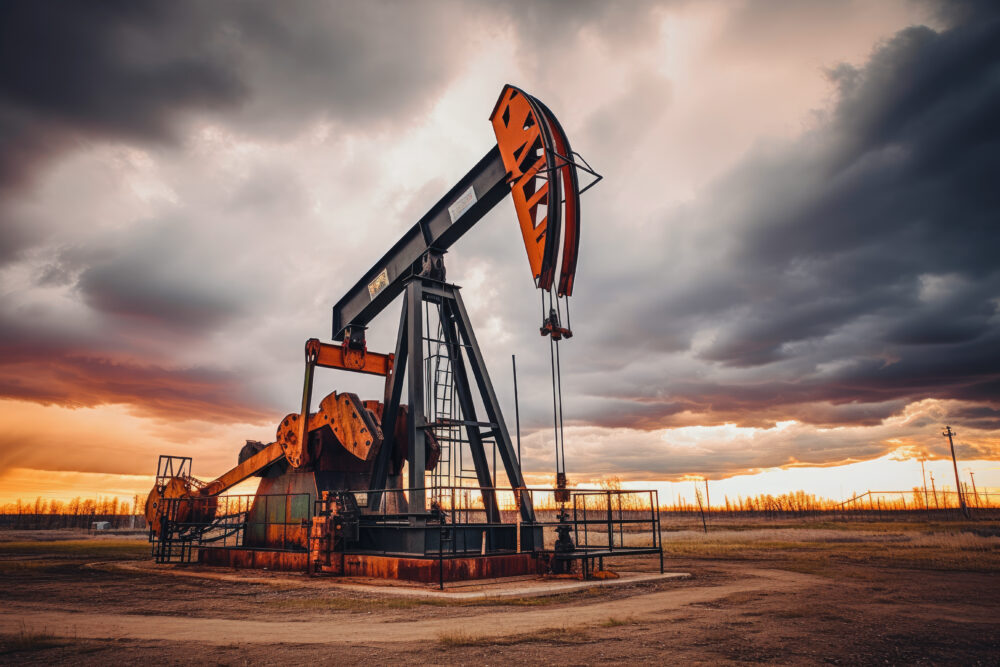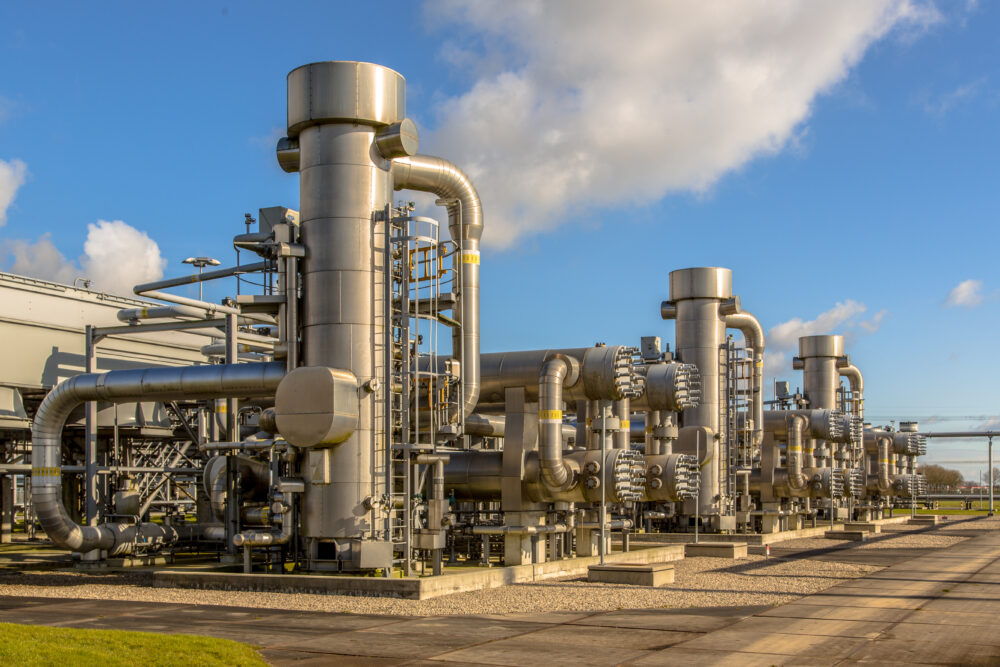Don’t Take the Bait on $100 Crude Oil
Share This Story, Choose Your Platform!
With the price of West Texas Intermediate (WTI) crude oil poking its head above the $80 level, media and analysts have been abuzz with talk of $100 crude by summertime.
Crude prices dominated headlines in 2022 reaching 10-year highs on Russia’s invasion of Ukraine and the sanctions on Russian exports that followed.
While prices have since stabilized, the war rages on. This and a reopening Chinese economy have given bulls ammunition to make their $100 case.
We’re not convinced.
Near Term Bullish Signs for Crude Oil Prices
The decrease in Russian crude imports to the EU have largely been made up for by Saudi Arabia and the United States. The U.S. quietly increased domestic crude oil production to near pre-pandemic highs. Greater exports, however, have prevented the extra production from adding to domestic supply.
A further increase in US exports would require scaling up production well beyond the record 13 million barrels per day set during the Trump administration. Meanwhile, Saudi Arabia is unlikely to boost European exports unless it suits them financially or geopolitically.
This puts the European supply chain in a tight position.
While the media focuses on the military conflict, other analysts cite the reopening of China as their rationale for bullishness. That is a major event for total energy consumption, but the impact on crude oil and gasoline specifically may be somewhat overestimated. China does not have the same automobile culture as the west, nor did its government deliver stimulus checks during the lockdown. The citizens of China are not hitting the open road in masses with cash in their pockets, as happened in the U.S. over the last couple of years. As China’s factories continue to reopen, we expect greatly increased usage of coal and natural gas, but a comparatively smaller uptick in crude oil and gasoline.
Black Market for Black Gold
The goal of sanctioning Russia is to diminish the total revenue they receive from exports.
How effective have those policies been?
One of the key elements that enables commodity markets to run efficiently is the fungibility of the products. When prices for the same or similar commodities vary by too much, arbitrageurs will step in to make a profit. In doing so, they keep the market prices in line with each other.
When an obstacle or intervention prevents certain categories of buyers and sellers from trading freely, the commodity can lose fungibility and unnatural price disparities can occur.
Prior to the EU limiting imports of Russian petroleum products, most of the exports from the U.S. in this category went to Central and South America. Now, U.S. exports are going to Europe while Russian exports are going to South America. The net effect is that Russian tankers must travel farther than they otherwise would. However, as long as enough nations remain willing to buy, the impact of the EU’s action is limited.
While the west (meaning NATO) is unified in its intent to punish Russia, there is a different story in the east. The price cap on crude has hurt Russia financially while enabling China and India to buy their oil at a heavily discounted price. Russia’s Ural blend always traded at a discount to Brent, but that spread has widened significantly.
As long as this two-tier pricing mechanism is in place it will be difficult for crude prices to reach last year’s high.
Neutral Fundamentals and The Role of Politics
A divided government is often the most stable environment for forecasting markets. Republicans taking a majority in the House of Representatives is not enough to enact any pro-drilling legislation, but they can block implementation of further restrictions.
There is little hope for bipartisan agreement in Congress. Yet, it’s plausible we could see executive action to encourage domestic energy production. Such an action would need to be put in place soon if it is to have any impact on crude production before November 2024.
It has become commonplace for the price of WTI futures to fluctuate by well over a dollar from one day to the next. That short term volatility is likely to persist, but by stepping back and looking at moving averages we see equilibrium in this market.
Aside from boosting production, the federal government has a few other tools to alleviate prices at the pump. Democrats do not want to go into 2024 with gasoline above $5 per gallon. We saw last year that they were willing to use the Strategic Petroleum Reserve to lower prices ahead of the midterms. But with the SPR at its lowest level since 1980, that trick will not be as effective this time around.

The Strategic Petroleum Reserve dipped below 400M barrels for the first time in thirty years. In just the past 5 years there has been a reduction of nearly half.
If the price of oil rises to an uncomfortable level, we will see additional releases of tens of millions of barrels (short-sighted as that may be). On the other hand, if WTI were to fall below $65, the federal government would start buying to replenish the depleted stockpiles. This would give the current administration an opportunity to pat themselves on the back for making a profit on this whole policy.
OPEC will be another moderating influence in this market, at least for the time being. They are not actively trying to drive the price of oil back above $100. They know that would encourage greater investment in exploration and drilling by their competitors. OPEC would like to keep the price of Brent around $80 (~$75 for WTI) and will adjust output to help achieve that goal.
Those price influencing tools are not very effective against large-scale fundamental shifts in supply or demand. Nor do they work over a prolonged period. But in a market with neutral fundamentals, they will mitigate short-term aberrations.
Conclusion: Don’t Take the Bait
Geopolitics, current events, and climate activism take up so much of the public’s attention that they lose sight of the overarching trends.
While the changes in crude oil prices were extreme in 2022, the timing and direction of those changes were in line with the seasonal pattern. Crude oil typically rallies during springtime due to anticipation of increased demand from the upcoming summer driving season. Last year the uncertainty about the situation in Ukraine added volatility to the mix, making the price rise by more than it otherwise would have; and when it peaked in June it had further to fall. The seasonal pattern was amplified, not disrupted.

2022 was an extreme year for crude oil prices, but the timing of the price movement coincided with long established seasonal patterns
A look at the near-term futures would indicate that the price is expected to rise moderately in the spring and likely peak in July, right in line with the seasonal trend.
With balanced medium-term fundamentals, and both the seasonal pattern and technical indicators pointing to a rally, we would not be surprised to see WTI prices hover in the $80’s as summer approaches.
At that point, the $100 per barrel talk will be sure to heat up. Many traders will jump on that bandwagon.
But don’t take the bait.
Increased crude oil production and the looming recession will be enough to keep WTI from running away to the upside. Long-dated futures contracts are in backwardation, meaning next year’s December contract is trading at a discount to this year’s December contract, which is an indication of longer-term bearish sentiment.
Barring a substantial change in global crude oil output or a total financial collapse, we expect the fair value of WTI to remain between $60 -$90 per barrel for the remainder of the year, likely gravitating towards the center of that range.
Share This Story, Choose Your Platform!
Don’t Take the Bait on $100 Crude Oil
Share This Story, Choose Your Platform
With the price of West Texas Intermediate (WTI) crude oil poking its head above the $80 level, media and analysts have been abuzz with talk of $100 crude by summertime.
Crude prices dominated headlines in 2022 reaching 10-year highs on Russia’s invasion of Ukraine and the sanctions on Russian exports that followed.
While prices have since stabilized, the war rages on. This and a reopening Chinese economy have given bulls ammunition to make their $100 case.
We’re not convinced.
Near Term Bullish Signs for Crude Oil Prices
The decrease in Russian crude imports to the EU have largely been made up for by Saudi Arabia and the United States. The U.S. quietly increased domestic crude oil production to near pre-pandemic highs. Greater exports, however, have prevented the extra production from adding to domestic supply.
A further increase in US exports would require scaling up production well beyond the record 13 million barrels per day set during the Trump administration. Meanwhile, Saudi Arabia is unlikely to boost European exports unless it suits them financially or geopolitically.
This puts the European supply chain in a tight position.
While the media focuses on the military conflict, other analysts cite the reopening of China as their rationale for bullishness. That is a major event for total energy consumption, but the impact on crude oil and gasoline specifically may be somewhat overestimated. China does not have the same automobile culture as the west, nor did its government deliver stimulus checks during the lockdown. The citizens of China are not hitting the open road in masses with cash in their pockets, as happened in the U.S. over the last couple of years. As China’s factories continue to reopen, we expect greatly increased usage of coal and natural gas, but a comparatively smaller uptick in crude oil and gasoline.
Black Market for Black Gold
The goal of sanctioning Russia is to diminish the total revenue they receive from exports.
How effective have those policies been?
One of the key elements that enables commodity markets to run efficiently is the fungibility of the products. When prices for the same or similar commodities vary by too much, arbitrageurs will step in to make a profit. In doing so, they keep the market prices in line with each other.
When an obstacle or intervention prevents certain categories of buyers and sellers from trading freely, the commodity can lose fungibility and unnatural price disparities can occur.
Prior to the EU limiting imports of Russian petroleum products, most of the exports from the U.S. in this category went to Central and South America. Now, U.S. exports are going to Europe while Russian exports are going to South America. The net effect is that Russian tankers must travel farther than they otherwise would. However, as long as enough nations remain willing to buy, the impact of the EU’s action is limited.
While the west (meaning NATO) is unified in its intent to punish Russia, there is a different story in the east. The price cap on crude has hurt Russia financially while enabling China and India to buy their oil at a heavily discounted price. Russia’s Ural blend always traded at a discount to Brent, but that spread has widened significantly.
As long as this two-tier pricing mechanism is in place it will be difficult for crude prices to reach last year’s high.
Neutral Fundamentals and The Role of Politics
A divided government is often the most stable environment for forecasting markets. Republicans taking a majority in the House of Representatives is not enough to enact any pro-drilling legislation, but they can block implementation of further restrictions.
There is little hope for bipartisan agreement in Congress. Yet, it’s plausible we could see executive action to encourage domestic energy production. Such an action would need to be put in place soon if it is to have any impact on crude production before November 2024.
It has become commonplace for the price of WTI futures to fluctuate by well over a dollar from one day to the next. That short term volatility is likely to persist, but by stepping back and looking at moving averages we see equilibrium in this market.
Aside from boosting production, the federal government has a few other tools to alleviate prices at the pump. Democrats do not want to go into 2024 with gasoline above $5 per gallon. We saw last year that they were willing to use the Strategic Petroleum Reserve to lower prices ahead of the midterms. But with the SPR at its lowest level since 1980, that trick will not be as effective this time around.

The Strategic Petroleum Reserve dipped below 400M barrels for the first time in thirty years. In just the past 5 years there has been a reduction of nearly half.
If the price of oil rises to an uncomfortable level, we will see additional releases of tens of millions of barrels (short-sighted as that may be). On the other hand, if WTI were to fall below $65, the federal government would start buying to replenish the depleted stockpiles. This would give the current administration an opportunity to pat themselves on the back for making a profit on this whole policy.
OPEC will be another moderating influence in this market, at least for the time being. They are not actively trying to drive the price of oil back above $100. They know that would encourage greater investment in exploration and drilling by their competitors. OPEC would like to keep the price of Brent around $80 (~$75 for WTI) and will adjust output to help achieve that goal.
Those price influencing tools are not very effective against large-scale fundamental shifts in supply or demand. Nor do they work over a prolonged period. But in a market with neutral fundamentals, they will mitigate short-term aberrations.
Conclusion: Don’t Take the Bait
Geopolitics, current events, and climate activism take up so much of the public’s attention that they lose sight of the overarching trends.
While the changes in crude oil prices were extreme in 2022, the timing and direction of those changes were in line with the seasonal pattern. Crude oil typically rallies during springtime due to anticipation of increased demand from the upcoming summer driving season. Last year the uncertainty about the situation in Ukraine added volatility to the mix, making the price rise by more than it otherwise would have; and when it peaked in June it had further to fall. The seasonal pattern was amplified, not disrupted.

2022 was an extreme year for crude oil prices, but the timing of the price movement coincided with long established seasonal patterns
A look at the near-term futures would indicate that the price is expected to rise moderately in the spring and likely peak in July, right in line with the seasonal trend.
With balanced medium-term fundamentals, and both the seasonal pattern and technical indicators pointing to a rally, we would not be surprised to see WTI prices hover in the $80’s as summer approaches.
At that point, the $100 per barrel talk will be sure to heat up. Many traders will jump on that bandwagon.
But don’t take the bait.
Increased crude oil production and the looming recession will be enough to keep WTI from running away to the upside. Long-dated futures contracts are in backwardation, meaning next year’s December contract is trading at a discount to this year’s December contract, which is an indication of longer-term bearish sentiment.
Barring a substantial change in global crude oil output or a total financial collapse, we expect the fair value of WTI to remain between $60 -$90 per barrel for the remainder of the year, likely gravitating towards the center of that range.






